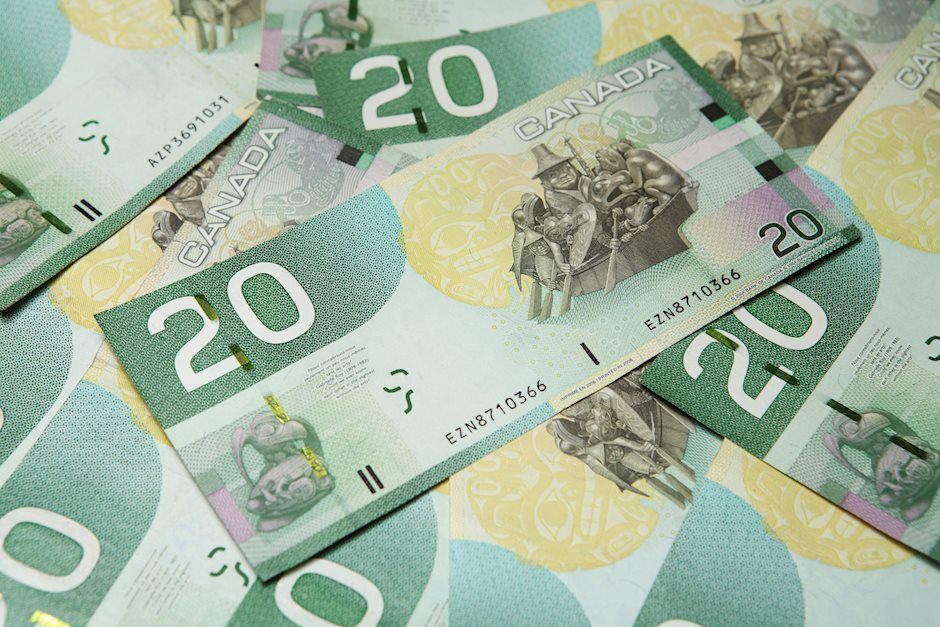USD/CAD treads water above 1.3550, upside seems limited due to higher crude Oil
- USD/CAD holds ground amid improved US Treasury yields on Monday.
- CME FedWatch Tool suggests a 50% chance of a 50 basis point Fed rate cut by the end of this year.
- The downside of the commodity-linked CAD could be limited due to higher crude Oil prices.

USD/CAD remains in the positive territory, trading around 1.3560 during the Asian session on Monday. However, the US Dollar (USD) may struggle due to rising odds for further rate cuts by the US Federal Reserve (Fed) in 2024. According to the CME FedWatch Tool, markets are pricing in a 50% chance of a 75 basis point rate cut to a range of 4.0-4.25% by the end of this year.
The US Dollar (USD) continues to rise as Treasury yields recover their losses. The US Dollar Index (DXY), which measures the value of the US Dollar, holds ground around 100.80 with 2-year and 10-year yields on US Treasury bonds standing at 3.59% and 3.74%, respectively.
Philadelphia Fed President Patrick Harker stated on Friday that the US central bank has effectively steered through a challenging economic landscape in recent years. Harker compared monetary policy to driving a bus, where it's essential to balance speed.
Canada’s Retail Sales rose by 0.9% month-over-month to $66.4 billion in July, rebounding from a 0.2% decline in June and surpassing the expected 0.6% increase. Sales grew in seven of nine subsectors, with motor vehicle and parts dealers leading the gains. This marked the strongest expansion in Canadian retail turnover since April 2023, countering calls for aggressive rate cuts by the Bank of Canada (BoC).
The downside of the Canadian Dollar (CAD) would be restrained due to higher crude Oil prices. West Texas Intermediate (WTI) Oil price appreciates to near $71.50 at the time of writing. Crude Oil prices are rising due to concerns over potential supply disruptions amid escalating tensions in the Middle East.
Hezbollah and Israel engaged in heavy exchanges of fire on Sunday, with the Lebanese militant group launching missiles deep into northern Israeli territory following intense bombardment—some of the most severe in nearly a year of conflict, according to CNN.
Canadian Dollar FAQs
The key factors driving the Canadian Dollar (CAD) are the level of interest rates set by the Bank of Canada (BoC), the price of Oil, Canada’s largest export, the health of its economy, inflation and the Trade Balance, which is the difference between the value of Canada’s exports versus its imports. Other factors include market sentiment – whether investors are taking on more risky assets (risk-on) or seeking safe-havens (risk-off) – with risk-on being CAD-positive. As its largest trading partner, the health of the US economy is also a key factor influencing the Canadian Dollar.
The Bank of Canada (BoC) has a significant influence on the Canadian Dollar by setting the level of interest rates that banks can lend to one another. This influences the level of interest rates for everyone. The main goal of the BoC is to maintain inflation at 1-3% by adjusting interest rates up or down. Relatively higher interest rates tend to be positive for the CAD. The Bank of Canada can also use quantitative easing and tightening to influence credit conditions, with the former CAD-negative and the latter CAD-positive.
The price of Oil is a key factor impacting the value of the Canadian Dollar. Petroleum is Canada’s biggest export, so Oil price tends to have an immediate impact on the CAD value. Generally, if Oil price rises CAD also goes up, as aggregate demand for the currency increases. The opposite is the case if the price of Oil falls. Higher Oil prices also tend to result in a greater likelihood of a positive Trade Balance, which is also supportive of the CAD.
While inflation had always traditionally been thought of as a negative factor for a currency since it lowers the value of money, the opposite has actually been the case in modern times with the relaxation of cross-border capital controls. Higher inflation tends to lead central banks to put up interest rates which attracts more capital inflows from global investors seeking a lucrative place to keep their money. This increases demand for the local currency, which in Canada’s case is the Canadian Dollar.
Macroeconomic data releases gauge the health of the economy and can have an impact on the Canadian Dollar. Indicators such as GDP, Manufacturing and Services PMIs, employment, and consumer sentiment surveys can all influence the direction of the CAD. A strong economy is good for the Canadian Dollar. Not only does it attract more foreign investment but it may encourage the Bank of Canada to put up interest rates, leading to a stronger currency. If economic data is weak, however, the CAD is likely to fall.
Author

Akhtar Faruqui
FXStreet
Akhtar Faruqui is a Forex Analyst based in New Delhi, India. With a keen eye for market trends and a passion for dissecting complex financial dynamics, he is dedicated to delivering accurate and insightful Forex news and analysis.

















